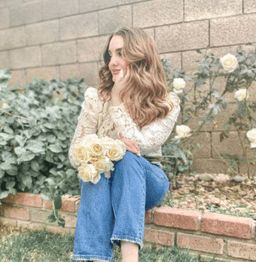How Lori Sullivan Grew Guitar & Lace to $10K/Month with Pinterest & SEO


Business Description
Table of Contents
Navigate through the case study sections
Executive Summary
Case Study Content
Introduction
In 2017, Lori Sullivan was teaching music and feeling stuck in a routine. She launched Guitar & Lace as a personal diary about wedding plans and teaching life, but soon spotted the potential for something bigger. Fast forward seven years and her blog now brings in up to $10,000 every month. This case study breaks down the moves she made, from visual social media to search optimization, that fueled her growth.
From Hobby to Business
What began as a side project grew when Lori chose to focus on fashion and home décor, areas she loved. She picked a clean WordPress theme, learned SEO basics, and set up AIOSEO plugins. Rather than chasing every platform, she zeroed in on Pinterest, treating it like a visual search engine. Her approach was simple yet effective which helped her blog stand out.
Pinterest as a Traffic Engine
Lori created multiple pin images per post, each with clear titles, descriptive alt text, and keyword-rich descriptions. By spacing out her pinning schedule and using Tailwind CSS–friendly graphics from Canva, she drove consistent referral traffic. Within months, Pinterest referrals accounted for more than half her monthly visits. She drive a lot of traffic without paid ads, proving a smart pinning strategy pays off.
Mastering SEO
She took time to research long-tail keywords, optimized image file names, and crafted internal links between posts. The AIOSEO tool guided her to include keywords in headings, meta descriptions, and image alt text. Over time, Organic Search became her second-largest source of visitors, cementing her authority in the fashion and décor niche.
Diversifying Income Streams
To avoid depending on one revenue source, Lori tapped affiliate programs, sponsored posts, and the LIKEtoKNOW.it app for shoppable images. She also launched premium icon sets on Etsy under her brand. These small digital products often out-earned her affiliate checks, giving her a buffer when algorithms shifted.
Consistency & Adaptation
Even while still teaching, Lori posted new articles every week, squeezing in research during lunch breaks and repurposing older content. When Instagram’s reach dipped, she refocused on SEO and Pinterest. Rather than panic, she tracked performance with Google Analytics and adjusted her plan month by month.
Conclusion
Lori Sullivan’s story shows that a well-narrowed focus, smart use of free platforms, and multiple income lines can transform a side hobby into a thriving blog business. Her mix of visual marketing, on-page SEO, and consistent output provides a blueprint for anyone looking to build a profitable online presence.
Key Takeaways
- 1Using Pinterest strategically as a visual search engine drove over half of her traffic through SEO-optimized pins.
- 2Optimizing every blog element, images, headings, meta descriptions, with an SEO plugin boosted organic search rankings.
- 3Building multiple revenue channels, affiliate links, sponsored posts, shoppable images, and digital products, protected against platform shifts.
- 4Staying consistent by posting weekly, repurposing content, and scheduling work around a full-time teaching job built momentum over time.
- 5Tracking results in Google Analytics and adjusting tactics after algorithm changes ensured ongoing growth.
- 6Prioritizing quality design via Canva and clear alt text made pins stand out, encouraging clicks and repins.
Tools & Technologies Used
Premium Content Locked
Subscribe to access the tools and technologies used in this case study.
Unlock NowHow to Replicate This Success
Premium Content Locked
Subscribe to access the step-by-step replication guide for this case study.
Unlock NowInterested in Being Featured?
Share your success story with our community of entrepreneurs.
Explore More Case Studies
Discover other inspiring business success stories

How Ramune VPN Won Japan's SEO Game and Sold for $310K in 2 Years
Daisuke, founder of Ramune VPN, spotted a gap in Japan's VPN review space, tackled it alone, and scaled his website to h...
Ramune VPN

How Carrie Kerpen Engineered an Eight-Figure Sale of Likeable Media
Carrie Kerpen co-founded Likeable Media in 2006 and grew it into a leading social media agency by focusing on predictabl...
Likeable Media

How Biaheza Made $1K in 8 Days with a Skincare Dropshipping Hack
In late May 2023, entrepreneur and YouTuber Biaheza identified a low-competition skincare niche and built Skinfion, a dr...
Skinfion